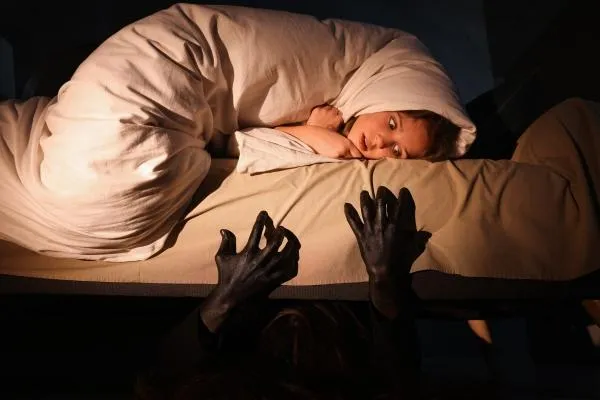


What to Do If Your Child Has Night Terrors: A Guide for Parents
What to Do If Your Child Has Night Terrors: A Guide for Parents
As a parent, waking up to the sound of your child screaming, thrashing, or appearing terrified in their sleep can be deeply distressing. If this happens repeatedly and your child doesn't seem fully awake—or has no memory of the event the next morning—you may be dealing with night terrors.
Night terrors, also known as sleep terrors, are a type of parasomnia that typically affects children between the ages of 3 and 8. While they can be alarming, they are generally not harmful and children often outgrow them. However, knowing how to respond can ease the experience for both you and your child.
Understanding Night Terrors

Before diving into what to do, it's helpful to understand what night terrors are—and are not:
They are not nightmares. Unlike nightmares, which occur during REM (dream) sleep and often wake a child fully, night terrors occur during deep, non-REM sleep—usually within the first 1 to 2 hours after falling asleep.
They are not remembered. Children typically have no recollection of the event the next morning.
They are involuntary. Your child is not acting out or responding to something specific; night terrors are a sleep disturbance beyond their control.
Common signs of night terrors:
Sudden screaming or crying
Fast breathing or sweating
Thrashing or kicking
Sitting up or opening eyes wide without recognition
Inconsolability and unresponsiveness
What to Do During a Night Terror
It’s instinctual to want to wake or soothe your child during a night terror, but here's what experts recommend:
1. Do Not Wake Your Child
Waking a child during a night terror can cause confusion or prolonged agitation. Instead, allow the episode to pass naturally. Most night terrors last 5 to 20 minutes.
2. Ensure Their Safety
Stay nearby to prevent injury. Gently guide them away from furniture or sharp objects if they’re moving around. If they sleep in a bunk bed, consider moving them to a lower bed.
3. Keep a Calm Presence
Speak softly and reassuringly, even if your child doesn’t respond. Your calm energy can help create a safer environment.
4. Don’t Try to Restrain Them
Unless they’re in danger of hurting themselves, don’t attempt to physically hold or shake them awake. This may escalate the fear response.
What to Do After a Night Terror
Once your child settles back into sleep:
Monitor the frequency. Keep a log of when episodes occur, how long they last, and any patterns (e.g., after stressful days, when overtired, or after illness).
Avoid discussing it the next day. Since your child won’t remember the episode, drawing attention to it can cause unnecessary worry.
How to Prevent Night Terrors
While you can’t always prevent night terrors, creating a stable bedtime environment can make a difference:
1. Stick to a Regular Sleep Schedule
Overtiredness is a major trigger. Ensure your child gets the recommended amount of sleep for their age and follows a predictable bedtime routine.
2. Limit Stimulation Before Bed
Turn off screens at least an hour before bedtime and keep pre-sleep activities calm and predictable.
3. Manage Stress
Children absorb more than we realize. Support your child’s emotional well-being by encouraging open communication and providing a calm home atmosphere.
4. Address Underlying Health Issues
Conditions like sleep apnea or restless leg syndrome can contribute to night terrors. If episodes are frequent or severe, consult a pediatrician or sleep specialist.
When to Seek Medical Help
Occasional night terrors are common, but reach out to your pediatrician if:
They happen more than twice a week
Your child gets injured during episodes
The episodes disrupt family sleep significantly
Your child shows signs of extreme daytime fatigue or behavioral changes

Night terrors can be unsettling, but rest assured they are usually a normal part of childhood development. With the right approach, most children outgrow them without any long-term effects. Your role as a calm, supportive presence—both during and after the episodes—can make all the difference.

Infant Care
Nurturing and caring environment for your little one's growth.

Toddler Care
Nurturing growth and discovery in a safe, loving environment.

Preschool
Nurturing creativity and growth in a safe, engaging environment.
Ga Pre-K Lottery
Unlock educational opportunities with our Ga Pre-K Lottery program.
AfterSchool
Enriching and safe after-school care tailored to children's growth.
Kindergarden
Nurture young minds with personalized attention and engaging activities.
Testimonials
Our Parents love us
Here's some of what they had to say
My daughter has been going here for a year. She and we love it! The staff is very kind and helpful. They listen to my concerns and always help her and engage her with activities that fit her abilities instead of just her age! We have restricted diet; they work with us to accommodate her. Chroma has become our second family!
Khawla M.

My daughter loves it here. She loves all her teachers, she learns something new every day. We love the activities they provide our child with.
Jessica B.
